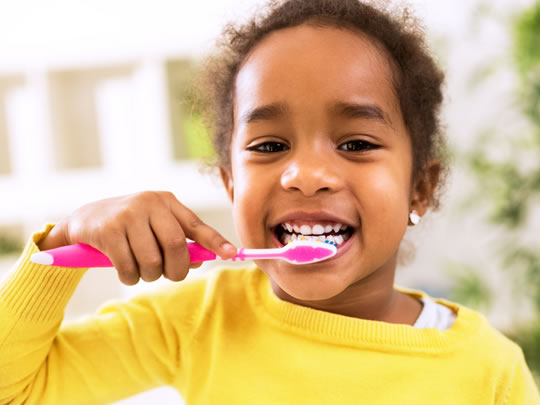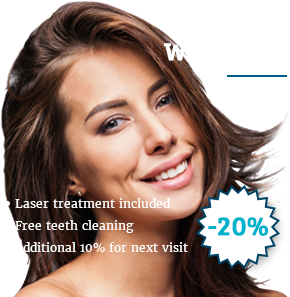- You must remove plaque if you are to prevent cavities. To do this, try to always brush twice a day, preferably after meals. Floss and use a mouthwash daily.
- Dentists recommend brushing your teeth for at least 2 minutes each session.
- Listen to the dentist’s rules when it comes to dealing with braces and retainers. Meaning no chewing gum or forgetting to clean them. The better your take care of your braces and retainers, the better they can do their job and the sooner you can go without them.
- Brush your teeth before going to the dentist but don’t over brush. You don’t want your gums bleeding. They’ll know what you’re up to.
- Don’t forget to bring your insurance card to the dentist office with you.
Bring a squeeze ball to the dentist office with you. It helps relieve the tension. - Prevention is worth a pound of cure. Brush your teeth regularly, floss, use mouthwash, and get your teeth cleaned every 6 months. If you do these things, you’ll be able to avoid major dental issues.
- Don’t brush too hard. This can lead to receding gums and over sensitive teeth.
- Most water supplies contain fluoride which helps fight cavities. If you don’t have time to brush your teeth, swish around some water in your mouth.
- Avoid eating too much sugar. This is the leading cause of tooth decay. Avoid drinking sodas frequently and eating hard candy throughout the day.
- The proper way to brush your teeth is to hold the tooth brush at a slight angle against your teeth and to move the brush in a short back and forth motion. Make sure to brush all sides of the tooth – inside, outside and chewing surface.
- Remember to replace your toothbrush – or electronic toothbrush head – every few months. A frayed toothbrush is not capable of doing a proper job so it is best to have a new brush to get your teeth cleaned.
- Don’t wait until a tooth ache is unbearable before going to the dentist. If the pain lasts for more than a day call your dentist and make an appointment. The earlier something is looked at the less work will need to be done.
- Always be sure that your toothpaste contains fluoride. This is the active ingredient that fights tooth decay.
- Brush your teeth after meals for at least 3 minutes. Regular brushing is a great way to keep the teeth in good condition
- Don’t brush too hard. Overbrush can make your gums bleeding and teeth sensitive to hot, cold and sweets.
- Use a mouthwash daily. It helps kill bacteria, that cause bad breath and help prevent gum disease.
- Use toothpaste which contains fluoride. It promotes tooth remineralization and can make a tooth more decay resistant.
- Don’t eat too much sugar. Sugary foods and drinks encourage tooth decay.
- Visit your dentist twice a year (even when you think it is not necessary) to make sure your teeth are in good condition. Remember, your dentist can see much more than you.
- Replace your toothbrush every 3 months. Good quality toothbrush provides a better clearing.
- Stop smoking. Smoking may cause bad breath and easily stains your teeth.
- Drink plenty water with fluoride, which helps prevent tooth decay.
- Chew sugarless gum, if you can’t brush after a meal. It mechanically cleans the surfaces of your teeth and promotes the flow of saliva.
POST OP INSTRUCTIONS
GENERAL ADVICE
Begin daily brushing as soon as the child’s first tooth erupts. A tiny pea-size amount of fluoride toothpaste can be used after the child is old enough not to swallow it. By age 4 or 5, children should be able to brush their own teeth twice a day with supervision. However, each child is different. Your dentist can help you determine whether the child has the skill level to brush properly.Proper brushing removes plaque from the inner, outer and chewing surfaces. When teaching children to brush, place toothbrush at a 45 degree angle. Start brushing along the gum line with a soft bristle brush in a gentle circular motion. Brush the outer surfaces of each tooth, upper and lower. Repeat the same method on the inside surfaces and chewing surfaces of all the teeth. Finish by brushing the tongue to help freshen breath and remove bacteria. Establishing a specific routine (brushing the teeth in a certain order) will help ensure that the child does not miss any areas.
Flossing removes plaque between the teeth where a toothbrush can’t reach. Flossing should begin when any two teeth touch. You should floss the child’s teeth until he or she can do it alone. Use about 18 inches of floss, winding most of it around the middle fingers of both hands. Hold the floss lightly between the thumbs and forefingers. Use a gentle, back-and-forth motion to guide the floss between the teeth. Curve the floss into a C-shape and slide it into the space between the gum and tooth until you feel resistance. Gently scrape the floss against the side of the tooth. Repeat this procedure on each tooth. Don’t forget the backs of the last four teeth. Floss picks can be substituted if you wish.
Toothache:
Clean the area of the affected tooth thoroughly. Rinse the mouth vigorously with warm water or use dental floss to dislodge impacted food or debris. DO NOT place aspirin on the gum or on the aching tooth. If the face is swollen, apply cold compresses. Take the child to a dentist.
Cut or Bitten Tongue, Lip or Cheek:
Apply ice to bruised areas. If there is bleeding apply firm but gentle pressure with a gauze or cloth. If bleeding does not stop after 15 minutes or it cannot be controlled by simple pressure, take child to hospital emergency room.
Knocked Out Permanent Tooth:
Find the tooth. Handle the tooth by the crown, not the root portion. You may rinse the tooth, but DO NOT clean or handle the tooth unnecessarily. Make sure the sink drain is plugged before rinsing it in the sink! Inspect the tooth for fractures. If it is sound, try to reinsert it in the socket. Have the patient hold the tooth in place by biting on a gauze. If you cannot reinsert the tooth, transport the tooth in a cup containing the patient’s saliva or milk. The patient must see a dentist IMMEDIATELY! Time is a critical factor in saving the tooth. In the case of a baby tooth being knocked out, it will not be reinserted into the socket.
Contact us now
Capitalize on low hanging fruit to identify a ballpark value added activity to beta test. Override the digital divide with additional clickthroughs from DevOps.
EMERGENCY CONTACT
Free call 24/7
0721393939
Copyright 2020 Dentosense Dental Clinic. All rights reserved. Website by Web Solutions Kenya.




